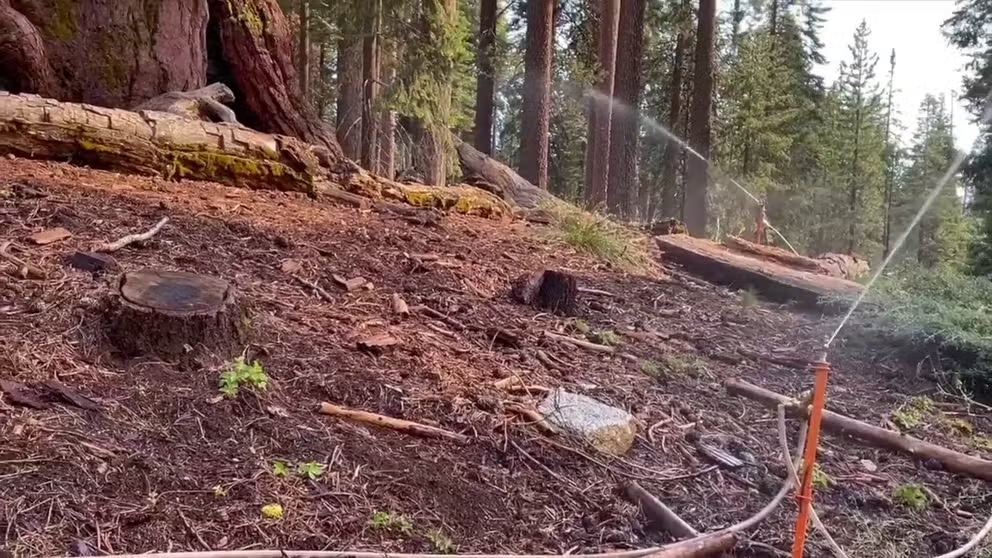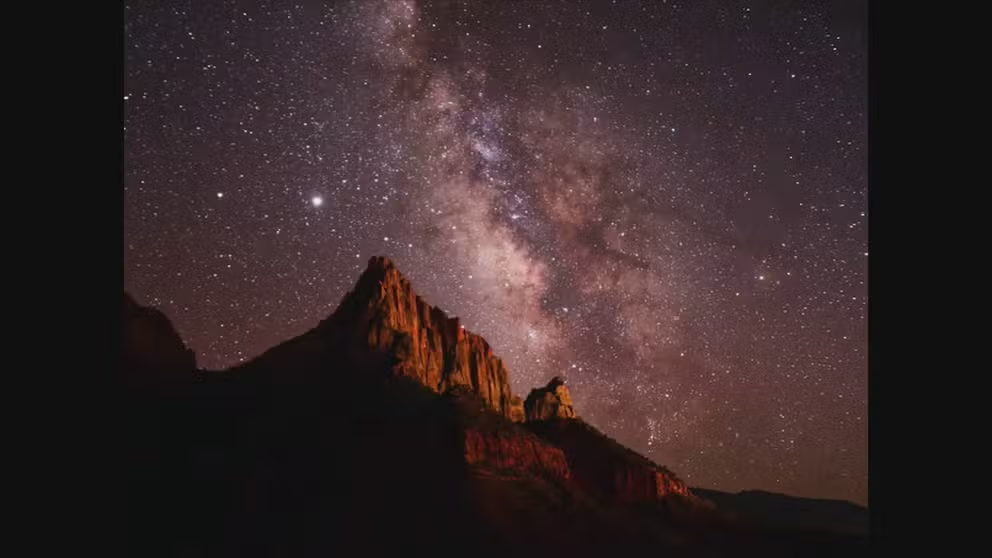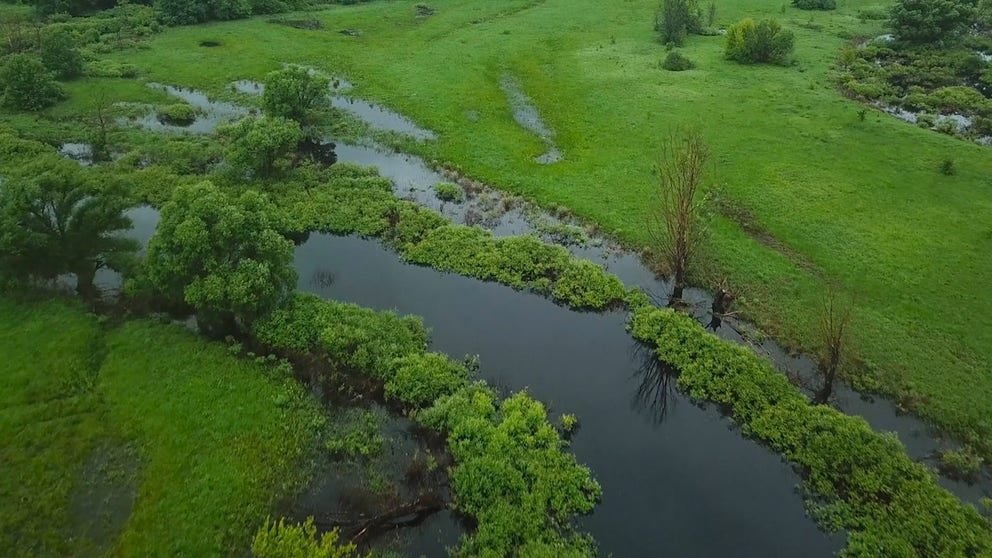California home to America's most polluted national parks, report says
According to the report, 97% of our nation’s national parks suffer from significant or unsatisfactory levels of harm from air pollution, and 98% suffer from haze pollution.
Firefighters install sprinklers to protect sequoia trees in Washburn Fire
Firefighters are taking multiple measure to help fight the Washburn Fire including installing sprinklers to protect their most sacred sequoias. (Video from December 2022)
The U.S. is home to dozens of national parks from coast to coast and offers something for all nature lovers and outdoor enthusiasts, but a new report released by environmentalists says America’s national parks are being threatened by air pollution and climate change, and some of the most polluted are found in California.
Five of the top 10 national parks with unhealthy air were located in California, with the top four all found in the Golden State, according to the National Parks Conservation Association’s (NPCA) Polluted Parks report.
"National parks are home to some of America’s most epic wild places and best-preserved cultural and historic sites, and these places need clean air and a healthy climate to flourish," the report begins. "Yet air pollution and climate change are some of the most serious threats to the health of our parks today – and the problems they cause include the weakening the health of plants and animals, permanently harming ecosystems, and negatively affecting visitors’ health and enjoyment."
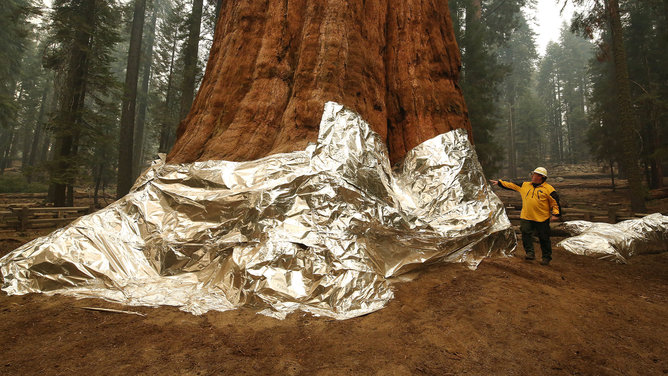
TOPSHOT - Operations Section Chief, Jon Wallace looks over General Sherman where the historic tree was protected by structure wrap from fires along with the Four Guardsmen at Sequoia National Park, California, September 22, 2021. - Hundreds of firefighters were battling to protect several groves of giant sequoias in the United States on September 20, warning the enormous ancient trees were at risk from out-of-control blazes. (Photo by Gary Kazanjian / POOL / AFP) (Photo by GARY KAZANJIAN/POOL/AFP via Getty Images)
According to the report, California’s Sequoia and Kings Canyon National Parks are ranked as the most polluted based on unhealthy air, along with threats like drought, wildfires and invasive species.
"With stunning mountains, caverns, forests, foothills and 2,000 plus-year-old sequoias towering overhead, the Land of the Giants might seem invincible," the NPCA website reads. "In truth, these majestic parks, and the plants and wildlife which rely on them, face unique and devastating consequences from human-caused air pollution and climate change."
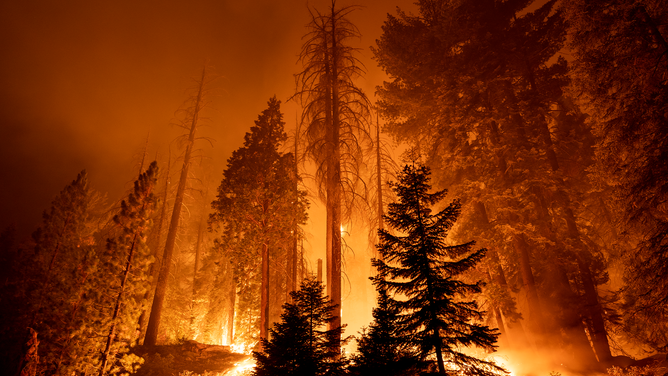
CALIFORNIA HOT SPRINGS, CA - SEPTEMBER 21: The Windy Fire blazes through the Long Meadow Grove of giant sequoia trees near The Trail of 100 Giants overnight in Sequoia National Forest on September 21, 2021 near California Hot Springs, California. As climate change and years of drought push wildfires to become bigger and hotter, many of the worlds biggest and oldest trees, the ancient sequoias, have been killed. The giant trees are among the worlds biggest and live to more than 3,000 years, surviving hundreds of wildfires throughout their lifespans. The heat of normal wildfire of the past helped the trees reproduce but increasing fire intensity can now kill them. A single wildfire, the Castle fire, destroyed as much as 14 percent of all the worlds giant sequoias in 2020. (Photo by David McNew/Getty Images)
(Getty Images)
The four most-polluted national parks, according to the report, are all in California:
- Sequoia and Kings Canyon National Parks
- Joshua Tree National Park
- Mojave National Preserve
- Yosemite National Park
HERE ARE THE TOP 10 DEADLIEST NATIONAL PARKS, ACCORDING TO RESEARCH
Watch: Timelapse of Milky Way over Zion National Park
Park Ranger Avery Sloss created this timelapse video of the Milky Way above Watchman Mountain in Zion National Park. Zion was certified an International Dark Sky Place by the International Dark Sky Association in 2021. (Video from March 2024)
Rounding out the top 10 include:
- Carlsbad Caverns National Park in New Mexico
- Death Valley National Park in California
- Indiana Dunes National Park in Indiana
- Guadalupe Mountains National Park in Texas
- Rocky Mountain National Park in Colorado
- White Sands National Park in New Mexico
"Sequoia, Kings Canyon and Joshua Tree National Parks and Mojave National Preserve remain the most ozone-polluted national parks in the United States," the report says. "The adverse air quality conditions in these parks are generated by vehicle emissions, industrial operations and agricultural activities in regions like the San Joaquin Valley of California – one of the most polluted areas in the nation where residents are frequently exposed to unhealthy air."
YELLOWSTONE, 8 OTHER NATIONAL PARKS RECEIVE FUNDING TO SAVE TREES FROM FATAL FUNGAL DISEASE
Yosemite National Park
Yosemite National Park is America's second oldest national park.
It’s not just a California issue, however.
According to the report, 97% of our nation’s national parks suffer from significant or unsatisfactory levels of harm from air pollution, and 98% suffer from haze pollution.
In addition, 96% of our national parks have sensitive species and natural habitats harmed by sulfur and nitrogen deposition and ozone pollution.
Everglades National Park
Everglades National Park is vital in preserving the wetlands habitat of South Florida.
In another shocking statistic from the report, data shows 57% of all national parks face a "high risk from at least one climate threat which have the potential to alter park ecosystems and resources fundamentally and permanently."
For example, Everglades National Park in Florida is threatened by rising sea levels that threaten the park’s freshwater marshes and mangrove forests, and Saguaro National Park in Arizona is threatened by drought that harms the saguaro cacti and other desert vegetation.
